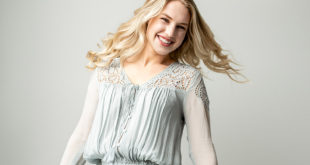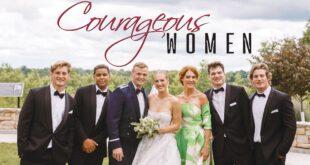Revisiting the Sistine Chapel
September 1 | 9 AM – 4:30 PM
An on-going exhibit in the Eau Claire Regional Arts Center
Paintings by Anders Shafer, Poem by Max Garland
Open M-F, 9am-4:30pm | Thursdays 9am-7pm
Enter through the Janet Carson Gallery
REVISITING THE SISTINE CHAPEL
Max Garland
They’ve just cleaned the Creation of Man,
God’s beard newly whitened, blown
back in a turbulent cloud
as he reaches for the left hand
of Adam, his first mistake,
Adam’s left arm, il sinistro,
lazily balanced on his knee,
the outline of the serpent
already lounging in the musculature.
The next two panels are shrouded
for the cleaning of the stars and plants.
Across the curtain covering the scaffold
the restorers’ shadows slowly move
like moths tiring in a lampshade.
They’re working backwards through time,
the way Michelangelo painted the world:
first the flood, then the fall, then Eve
lured from the dreaming Adam,
her hands posed in an attitude
of prayer, or like a child’s hands
poised for a first dive; then
the creation of Adam himself,
and only then, exhausted, embittered
by perfect knowledge
of where it all would lead,
did he paint the birth of light,
a fresco barely visible, still uncleaned,
God’s robes whirling toward
definition, arms raised, face
upturned, away from the viewer,
though you can see God was older
in the beginning, his beard thin
and feathery, his shoulders stiff.
The chaos from which he lifts him-
self seems almost too much for him.
Foreknowledge weakens. You can see it
from here. An older hand stirs the light
than the hand that nearly touches Adam
in the fresco they’ve cleaned,
making it easier to follow Adam’s gaze,
originally assumed to rest on God,
but clearly now sweeping past him
to the newly restored figure of Eve
nestled in the crook of the floating
God’s arm, her body caught
in the last moment of girlhood,
changing as she turns, changed
by the turning, her hair bundled
much brighter than anyone imagined.
Looking up at the Creation of Man
now that the dust, soot, gum and resin
have been rubbed away, the patchings
and dubious repaintings, it seems clear,
after all the storms and labor,
who will remain as lonely as ever,
the passion of his creatures
already straying from him.
And though it will be decades
before Michelangelo paints the judgment,
it seems clear what stokes the fire –
not anger, or justice, or even jealousy,
but loneliness, God’s dilemma,
the reason he fled the void
in the first place, though
the ailment swept in with him
in the folds of his robe
or the billows of his hair,
the thing he must have known
the light would not alter
even as he reached for it,
as if a single straw
could break the back of all that dark,
which is what makes that famous
gap, those newly brightened inches
between the finger of God
and the lounging hand of man,
the reason for the painting,
or the vault of the chapel itself,
or the upturned face of the visitor,
straining to see, wanting to stay,
yet jostled and swept along
by waves of perfect strangers,
as God knew they would become,
even as he reached for Adam
and felt himself stilled, frozen
in mid-flight, where Michelangelo
would later find him as if already
painted, precious inches away.
Anders Shafer
Artist Statement
Last December, my wife, Barbara, bumped into Max Garland, the poet laureate of Wisconsin. He suggested I might enjoy painting a picture about his poem, “Revisiting The Sistine Chapel.” I had enjoyed that poem and had spent eons looking at reproductions of the Sistine Chapel. I had seen the real frescos, after restoration, in a huge moving crowd. That experience seemed to relate to ideas in the poem.
Since childhood I have felt the tension between the “natural and the supernatural” and have worried about the void. I also thought Michelangelo produced the amazing masterpiece lying on his back. After reading his own poem on the subject I’m not sure. To me, Max’s poem gives the famous Bible story a “human dimension” and is filled with meaningful insights, like Adam looking past God at Eve, who is looking back.
Biography
Anders Shafer is a full time artist working in painting and drawing. He was the Max Schonefeld Distinguished Professor at the University of Wisconsin-Eau Claire, retiring in 2011. He has a B.F.A. from the University of Iowa and an M.F.A. from the University of Cincinnati. His work has been shown in hundreds of exhibitions around the country and he has won over forty awards including one of the first given by the N.E.A. He is the author and illustrator of the award winning book, “The Fantastic Journey of Pieter Bruegel” NYC 2001. He was represented by Gallery K in Washington D.C. for twenty five years and other galleries around the country. Works can be found in the Portland Art Museum, The Sheldon Museum, The National Collection of American Art-Smithsonian and many others. He has recently completed large commissions for public places.
Max Garland
Biography
Max Garland is a former rural letter carrier and author of The Postal Confessions, winner of the Juniper Prize, and Hunger Wide as Heaven, which won the Cleveland State Poetry Center Open Competition, as well as a chapbook Apparition. His work has appeared in Poetry, New England Review, Gettysburg Review, Best American Short Stories, and other journals and anthologies. He has received a NEA Fellowship for Poetry, Michener Fiction Fellowship, a Bush Literary Fellowship, the Tara Short Fiction Prize, and fellowships from the Wisconsin Arts Board in both poetry and fiction.
He lives and teaches in Eau Claire, and is the Poet Laureate of Wisconsin.
 Chippewa Valley 5ive for Women The Chippewa Valley’s Premier Magazine for Women!
Chippewa Valley 5ive for Women The Chippewa Valley’s Premier Magazine for Women!





